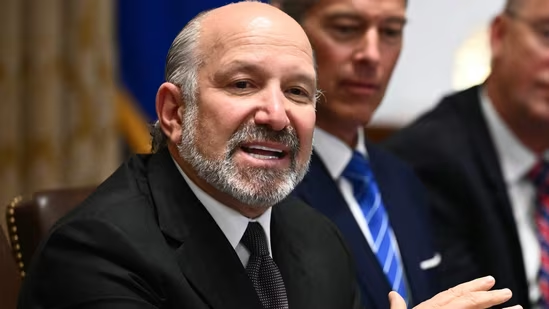
India
In a bold and striking prediction, U.S. Commerce Secretary Howard Lutnick declared on September 5, 2025, that India will soon return to the negotiating table—“saying sorry” and eager to strike a trade deal with President Donald Trump .
A Sharp Diplomatic Soundbite
Lutnick appeared on Bloomberg TV and outlined a scenario he deemed inevitable: “In a month or two months… India is going to be at the table, and they’re going to say they’re sorry, and they’re going to try to make a deal with Donald Trump,” he asserted. The phrasing—intentionally provocative—sent ripples of speculation across diplomatic and economic circles .
His remarks underscored the message that while India may currently throw its weight behind relationships with BRICS partners like Russia and China, the economic realities of being a major exporter to the United States will eventually compel it to recalibrate its stance.
Framing the Stakes: “Consumer is Always Right”
Lutnick positioned the U.S. as the global “consumer of the world,” boasting a $30-trillion economy and unparalleled buying power. He emphasized that while countries like India may feel pride defending their choices, businesses will ultimately pressure the government to mend fences and return to trade talks.
Drawing a parallel with Canada—another U.S. trading partner that suffered economic fallout from retaliatory tariffs before conceding to negotiations—Lutnick framed India’s current resistance as “bravado” that won’t hold under real-world pressures .
Oil, BRICS, and Trade Tensions
At the heart of the clash lies India’s continued purchases of heavily discounted Russian crude, which have surged from under 2% to around 40% of its oil imports. Lutnick decried this shift as “plain wrong” and “ridiculous,” warning that India must choose—not just economically but politically—between strengthening ties with the U.S. or risking further fallout .
He framed India as a strategic “vowel” between Russia and China within BRICS, suggesting that unless it pivots, punitive measures—such as hefty 50% tariffs—will remain in place.
Indian Response: Steadfast, Not Submissive
Far from issuing an apology, India’s Commerce and Industry Minister Piyush Goyal responded forcefully to the U.S. tariffs, asserting that India would not “bow down” but instead would expand its trade horizons and diversify global outreach .
Meanwhile, Commerce Secretary Sunil Barthwal reaffirmed India’s continued commitment to securing a Bilateral Trade Agreement (BTA) with the U.S., targeting a completion timeline around September–October 2025. However, he cautioned that tariff relief remains a key prerequisite to resuming formal negotiations.
The Bigger Diplomatic Context
This exchange unfolds amid a wider diplomatic rift. Since August 2025, U.S.–India relations have deteriorated sharply, marked by unilateral tariff escalations—first 25%, then an additional 25% tied to India’s Russian oil imports—bringing combined duties to a staggering 50% .
The tense geopolitical alignment, with Prime Minister Modi attending the SCO summit alongside Putin and Xi, has deepened U.S. apprehensions over India’s rebalancing towards rival spheres of influence
Even as the U.S. Treasury Secretary, Scott Bessent, described India as somewhat “recalcitrant” in these talks, he maintained a cautious optimism that a resolution could emerge by October if both sides reengage with mutual intent Reuters.
What Lies Ahead
Lutnick’s remarks may be interpreted less as an invitation and more as a calculated pressure tactic: a message that economic leverage still plays a dominant role in diplomacy. Yet, for India, maintaining strategic autonomy remains non-negotiable, even if it means weathering temporary economic pain to assert long-term sovereignty.
Bold declarations and tariffs aside, both nations stand on a tightrope—balancing trade interdependence, geopolitical recalibrations, and domestic political pressures. Should India step forward with an olive branch—or a strategic alignment recalibration—Trump’s response will be decisive, ultimately shaping whether this moment becomes a turning point or another diplomatic stalemate.
Thanks For Reading